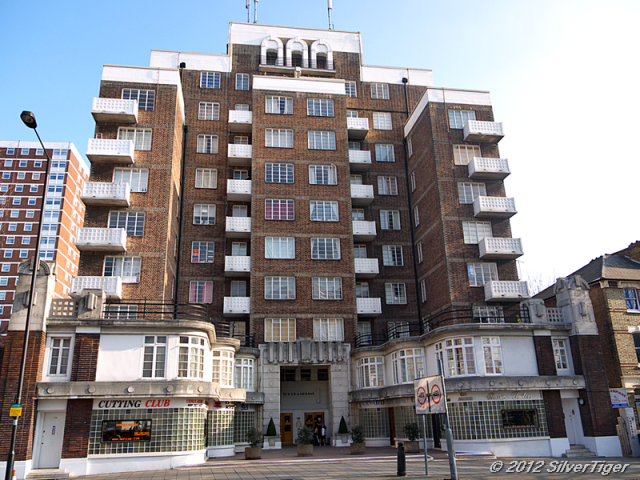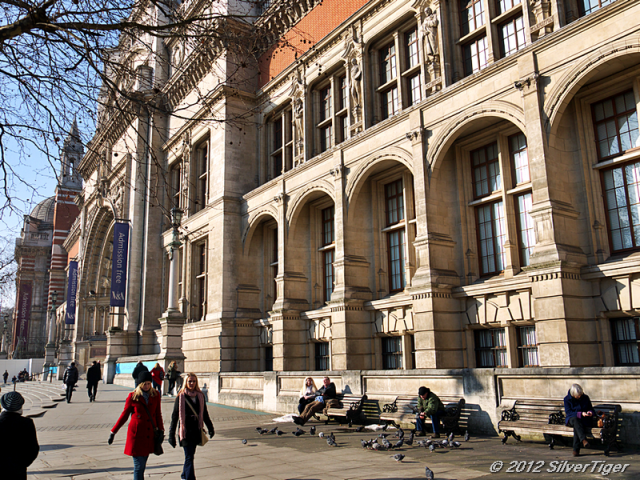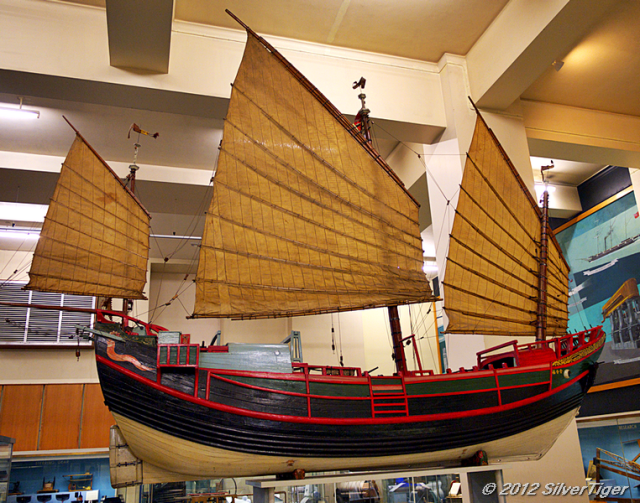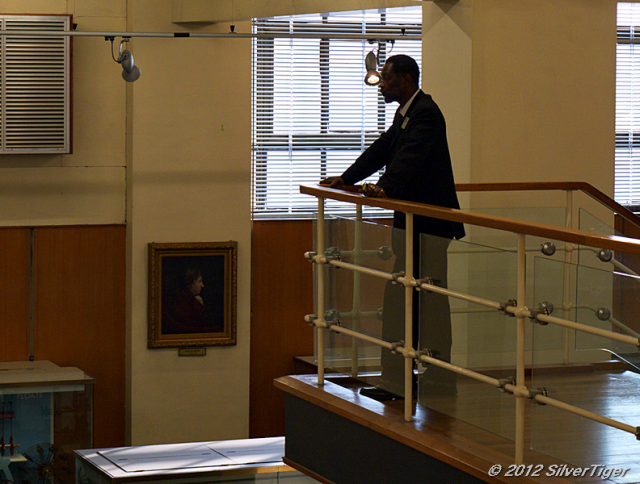Saturday, February 11th 2012

Look, ma, no snow…
(Pentonville Road, Islington)

… well, just a little, perhaps
(Shepherd’s Bush Common)
I must admit to setting out with slight misgivings this morning because of the cold and the lingering snow. Off we went, anyhow, just after 9 am and I faced the chilly air as bravely as I could. A long bus ride helped and we eventually arrived at the location shown in the above photo, Shepherd’s Bush.

Shepherd’s Bush Market
No sheep, no shepherds
Nearby is Shepherd’s Bush Market, though we didn’t visit it this time. The “Shepherd” in the name of Shepherd’s Bush is thought to be a person’s name and not to have anything to do with sheep and people herding them. This entrance is in Goldhawk Road, named after the family that once owned the land hereabouts. The market is fairly new as London markets go, being founded in 1914. It is a general purpose market selling a range of goods.

The Grampians
An Art Deco apartment block
This somewhat underappreciated area contains a few gems such as this Art Deco apartment block, designed by Maurice E. Webb, and built in 1935-37. It is perhaps not the most striking of Art Deco works but nonetheless gives an enthusiast of the style a little tingle of pleasure.

Goldhawk House
Edwardian premises for a Victorian firm
In contrast is this Edwardian (1903) building made for a company that proudly claims its foundation in Victorian times, 1888. I don’t know who commissioned it or anything else about it but its optimistic style is still able to impress despite being partially masked by the tasteless Tesco frontage.

Zippy Diner
Once a trendy milk bar
We stopped off for brunch at the Zippy Diner. From the outside, it looks like many another cafe cum burger bar but inside, a trendy milk bar from a bygone age is struggling for recognition. What would it have looked like in its heyday, I wonder?

Once the Odeon Cinema
Recognizable despite a heavy disguise
If it’s tasteless you want, then you can’t do better than an Australian bar. Hidden under this garish layer of paint is, believe it or not, a listed building. Someone isn’t doing his job in protecting listed buildings. Built in 1923, a time when prices were so stable that they could – literally – be set in stone, the cinema was originally called the Pavilion but later became an Odeon. It survived until the 1990s, I believe, before falling victim to the decline in cinema attendance.

Shepherd’s Bush Empire
One of Frank Matcham’s theatres
Next door to the ex-Odeon is the Shepherd’s Bush Empire. Built in 1903, the Empire staged live acts and music hall. Some famous acts have appeared here including Charlie Chaplin. Between 1953 and 1991, the theatre was known as the BBC Television Theatre and many popular TV programmes were made on the premises and big names of show business appeared here. Today, known as the O2Empire, it is a venue for live music shows.

Plaque to Frank Matcham
Theatre architect of renown
The Empire was designed by Frank Matcham, the architect responsible for many of Britain’s famous theatres, including the London Palladium and the Hackney Empire. The plaque was installed by the Frank Matcham Society,
We decided to move on from here, so we took a bus to a very different part of London, though one that was not all that far away, South Kensington. We disembarked in front of a noble façade.

A noble façade
The Victoria and Albert Museum
Despite the sunshine, it was still bitterly cold (at least, I thought so), despite the fact that some people seemed comfortable and at ease on the benches. Note the gent making friends with the pigeons.

Feeding the pigeons
The hand of friendship
The Victoria and Albert wasn’t our destination but we walked through it because it was warmer than walking in the street! We were going to visit a neighbouring institution, the Science Museum.

The Science Museum
A fascinating place to explore
Need I say what a wonderful place the Science Museum is? Not if you have ever been there, because you will have discovered that for yourself. If you have never been, then I would encourage you to do so. The building itself is impressive, especially the central hall that extends from the ground floor to the top floor. The place is chock full of exhibits and working models.

Gowns
Exemplifying materials and designs
In the materials section, we saw some gowns and other garments and, as through a glass, darkly, I spotted a pair of living exhibits, showing unusual costumes.

Living exhibits
Impromptu through two layers of glass
The Science Museum, as you would expect, has a lot of real objects on display, some of them of considerable size. For example, we visited the aviation section.

Real aircraft
A vast array illustrating the whole history of manned flight
Here we find an impressive set of actual aircraft from all periods of the history and evolution of manned flight, beginning with the first wood and canvas machines to present-day aircraft of the most advanced design.

Strange blossoms
Aero engine parts
Happily, photography is allowed in the Science Museum. The only problem is the lighting which, as it should be, is arranged so as not to damage the exhibits, but which is sometimes inimical to taking pictures.

Figure head
From HMS North Star, 1854
As well as actual artifacts, the Museum excels in scale models. I am continually astonished at the exactitude and detail of these. Many of them are, quite properly, protected behind glass, and this makes it difficult to photograph them because of reflections. This one, a 1:12 model of a Chinese junk, is out in the open.

Trading junk
As used in Fukien, China
My interest in clocks naturally drew me to the Time Measurement gallery which contains a vast array of devices for marking or recording the passing of that most valuable commodity, from sandglasses to the latest horological technology.

Long case clocks
Which one would I choose?
I spent some time studying these beautifully designed long case clocks, trying to decide which one I would choose to take home if such a gift were offered. Not that it ever would be, of course, but one can always dream… They demonstrate the art of combining technical precision with aesthetic appeal.

Sober elegance
French 19th century mantel clock
Or how about this see-through mantel clock, made in France in the 19th century whose sober elegance expresses its quality far better than words? (Sorry about the reflections on the glass case.)

Conversation piece
Time recorder
Or even this, definitely a conversation piece for your visitors. It is a time recorder, also known as time clock or a clocking-in clock, that is, the device used in workplaces to stamp on workers’ time cards their times of arrival and departure, to be used for pay calculation. Utilitarian but also beautiful – something today’s tool and equipment designers might like to bear in mind.

Transport
Vehicles for land, water, air… and ice
As every harassed commuter knows, transport is central to our civilization. Whether they are for conveying people or moving goods and raw materials, vehicles of every sort and for every sort of terrain have been invented. In this hall are representatives of conveyances and haulage engines for land, water and air and even ice – in the shape of a polar exploration tractor (the orange machine half visible behind the lighthouse lamp).

Two champions
They revolutionized the Age of Steam
Picking out individuals for special mention is difficult because all have their claims to fame but I have chosen two champions of the Age of Steam. Everyone knows Stevenson’s Rocket (on the right) which in 1829 beat all competitors to establish the viability of steam locomotives for railways, but fewer perhaps recognize Puffing Billy, a champion in the less glamorous but equally important work of hauling coal from the Wylam Colliery to the Tyne, a task which Billy performed from around 1814 to 1862, a remarkably long career. William Hedley built the locomotive, proving that sufficient traction could be generated by smooth wheels on smooth rails.

"Fly me to the moon…"
1969 lunar orbiter
Right at the other end of the scale we have this tiny but historic Apollo 10 command module, part of the vehicle in which Tom Stafford, John Young and Gene Cernan travelled around the moon in May 1969. The command module, with Gene Cernan piloting it, remained in lunar orbit while the other two crew members took the landing module to within 50,000 feet of the lunar surface, preparing the way for the Apollo 11 moon landing in July of the same year. We can only speculate about what George and Robert Stevenson and William Hedley would have made of these groundbreaking achievements.

Stair well
A horrid fascination
To travel between floors in the Science Museum there are of course lifts. These, however, are small and apt to become crowded at busy times. The stairs provide an alternative route. As you may recall, I am scared of heights and deep stair wells exercise a sort of horrid fascination over me. Taking this photo gave me the shivers but I took it nonetheless. There is a kind of beauty to its shape, reflecting nature’s love of spirals.

Evening at the V&A
Is that our bus?
We retraced our path through the Victoria and Albert to the bus stop in front of that building. By the time we arrived, daylight was fading and chilly temperature made our bus seem a welcome sight. Despite the cold, we had had a good day, taking in two theatres and a museum. And not forgetting a Zippy brunch…!

Curator
"They also serve who only stand and wait…"
Copyright © 2012 SilverTiger, https://tigergrowl.wordpress.com, All rights reserved.



Choosing a long case clock would be difficult. Those are all beautiful examples of both clocks and woodworking. Were those two chatting ladies really part of a museum exhibit, or were you being facetious? The art deco building is interesting, also the Matcham theater. Interesting how the entrance is stuck in a corner. I’m curious how the employer’s time clock works. The ones I’ve seen and used have a slot where you insert the paper card. It stamps the card and notches it out.
LikeLike
I agree about the clocks. Each had a different take on telling the time and one or two were frankly esoteric but all were beautiful.
I don’t know how that time recorder works. I imagine there is a slot for a card somewhere and that the arm is for selecting your employee number.
Facetious, I? Surely, not… 🙂 I honestly coul;d not say whether they were part of the museum or not. A lot of museums these days have re-enactors – people who pose as individuals from specific period or profession and engage you in conversation. Possibly these two were “living exhibits” as I suggested or merely two young ladies with eccentric tastes in dress. I preferred to take the photo unnoticed in order to avoid the posed look.
LikeLike